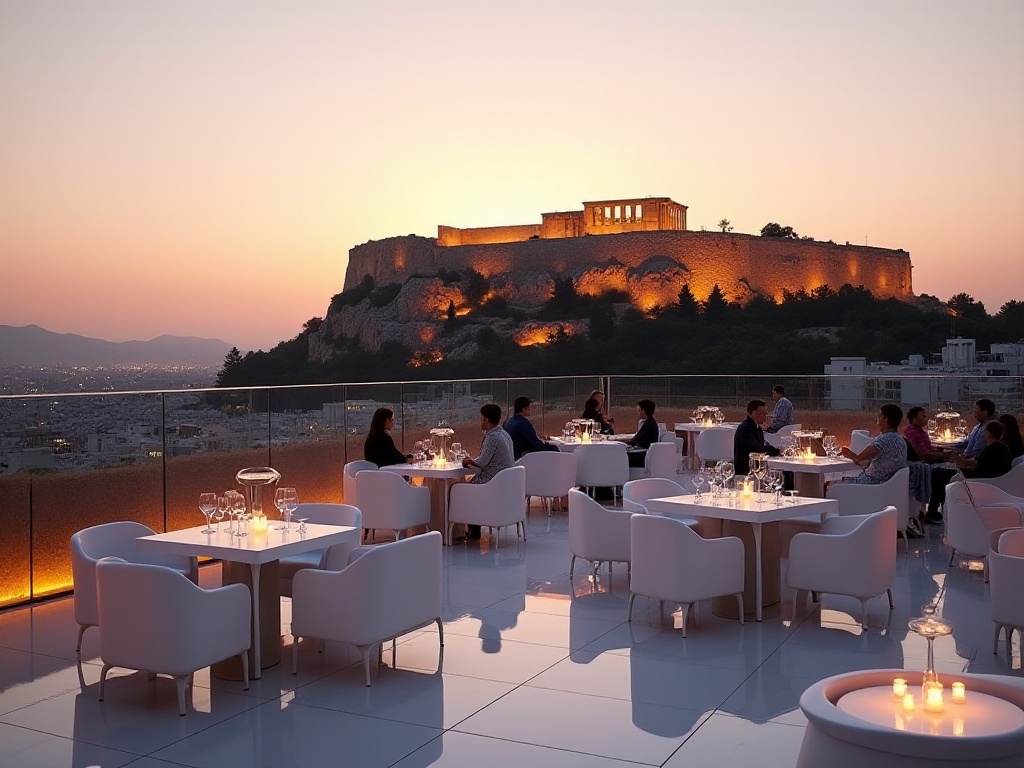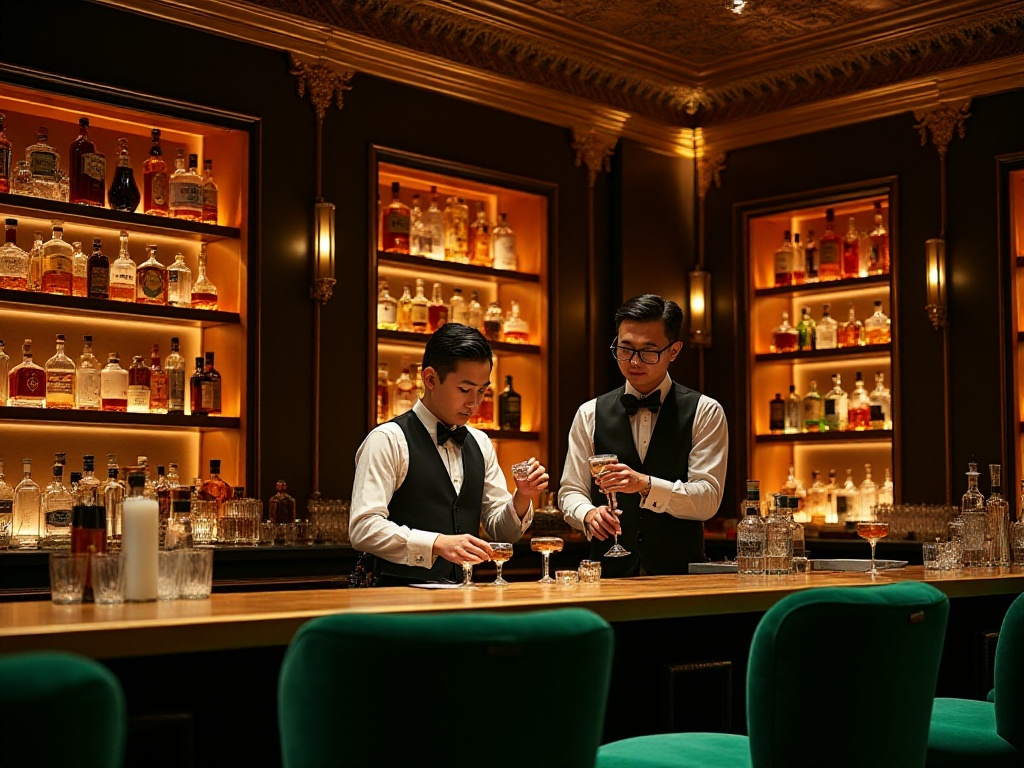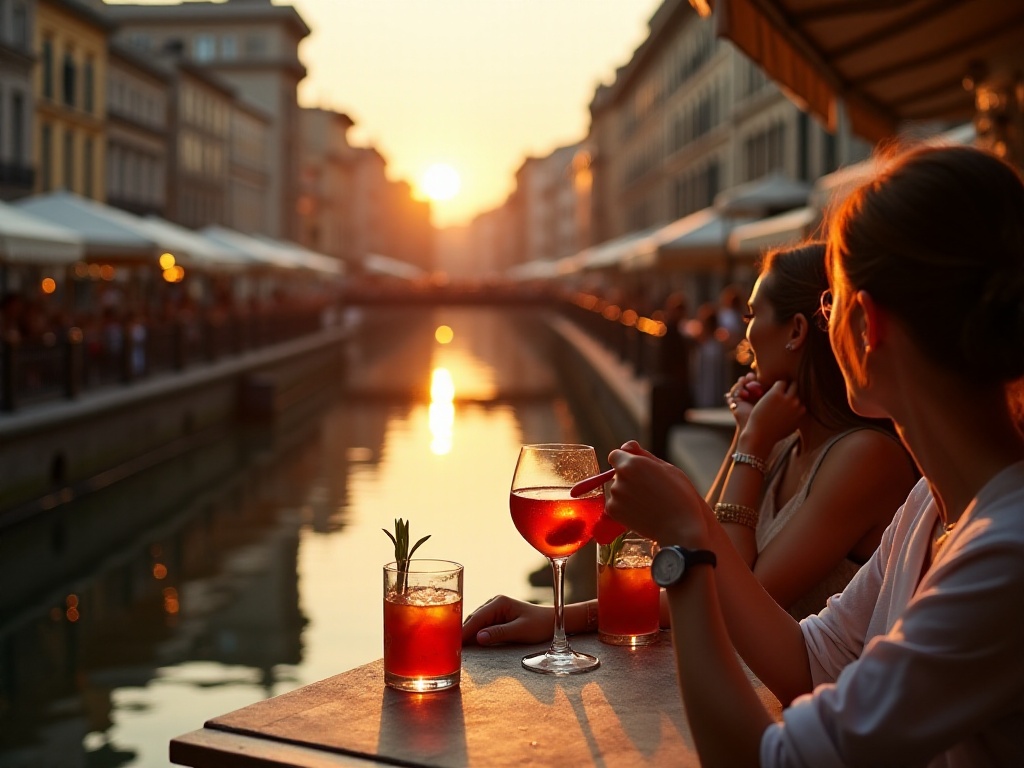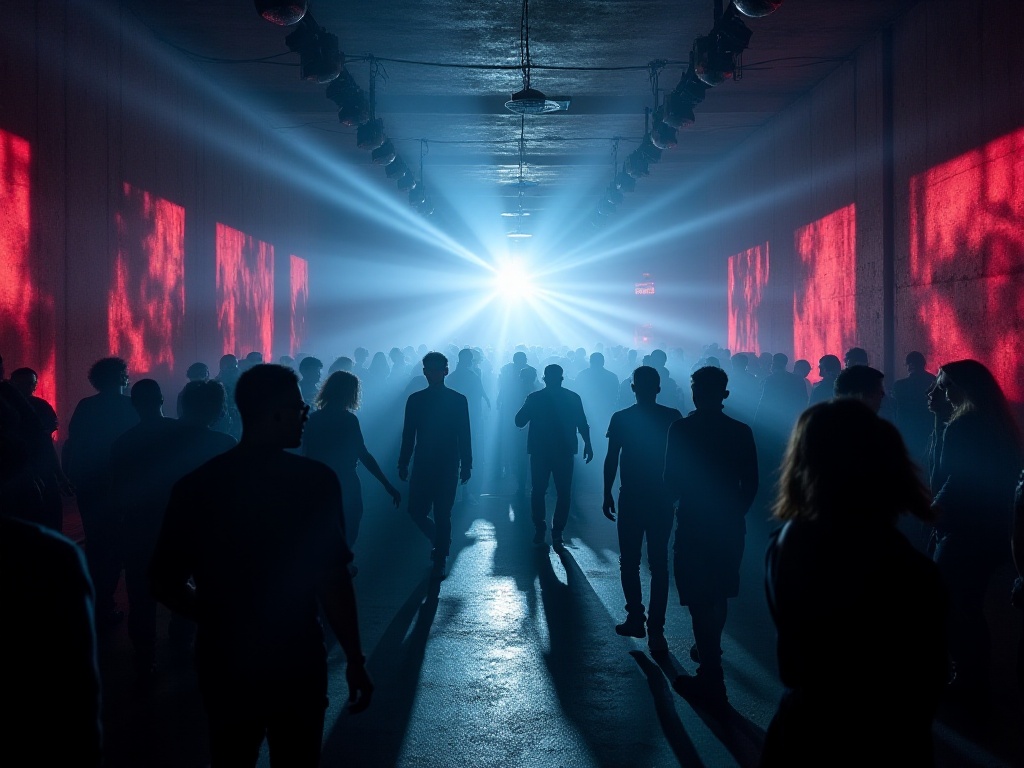Hello, I'm a world-traveling nightlife explorer. After years of in-depth experiences, I've finally decided to share my unique insights about nightlife in major cities across Asia and Europe. As a native Asian, I deeply understand the vast differences between Eastern and Western nightlife cultures. Are you ready? Let's embark on this journey through time and night.
When it comes to Shanghai's nightlife, I can't help but marvel at its diversity and inclusiveness. I remember being captivated by the neon lights when I first visited the Bund. Standing by the Huangpu River, watching the Oriental Pearl Tower twinkle in the night sky and the dazzling lights of Pudong's skyscrapers, a magnificent modern cityscape slowly unfolded before my eyes. While the Bund's night view is indeed stunning, even more enchanting are the nightlife venues hidden in various corners of the city.
Recently, I met a musician from New York at a jazz bar on Wukang Road, who said Shanghai's jazz atmosphere reminded him of Manhattan. That night, under dim lights, we sipped whiskey while listening to the band play classic jazz numbers. The saxophone's sound flowed through the air, the piano melody drifted in and out, the bassist gently plucked the strings, and the drummer kept a rhythmic beat - the whole scene seemed to transport us back to the golden age of jazz.
Indeed, Shanghai's music scene is developing at an astonishing pace. Not just traditional jazz, but electronic music, rap, and various other music forms can find their stage here. At an underground music club in Xuhui District, I witnessed the talent of Shanghai's local rap artists. Their lyrics in Shanghai dialect, incorporating local cultural elements, maintained the power of rap music while showcasing unique Shanghai culture characteristics.
In terms of drink culture, Shanghai truly stands out. I remember being impressed by a bartender's creativity at a hidden cocktail bar in a lane house, reinterpreting classic cocktails with local ingredients. That gin and tonic made with Shanghai local plums had both familiar tastes and surprising elements. The bartender told me they've been experimenting with incorporating Shanghai local ingredients into traditional cocktails, like martinis made with Longjing tea and whiskey sours modified with osmanthus wine, making Shanghai's cocktail culture more distinctively local.
The late-night food stalls on Nanjing Road Pedestrian Street are also an integral part of Shanghai's nightlife. At 2 AM, sitting at a roadside food stall, ordering a bowl of plain noodles and braised pork, watching the passing crowds, feeling the pulse of this sleepless city. Sometimes, you might encounter foreign tourists fresh from the bars, gesturing animatedly at the menu, struggling to order in broken Chinese - always an amusing sight.
In recent years, Shanghai's late-night bookstores have become a new nightlife option. A certain 24-hour bookstore in Jing'an District is always packed on weekend nights. Young people either read quietly alone, discuss literature in small groups, or participate in midnight reading clubs, adding a literary touch to Shanghai's nightlife.

Speaking of Tokyo's Shibuya nightlife, it's truly a dazzling world. Remember the feeling of first standing at Shibuya Crossing? Even at 3 AM, people are still coming and going. Huge electronic screens tirelessly play advertisements, convenience stores operate 24 hours, providing endless energy to this sleepless city.
Shibuya has so many unique venues. Most memorable are those izakayas hidden in small alleys. Once, in a sake specialty shop that could only accommodate 8 people, I met an owner who had been running the place for 40 years. He told me that Shibuya's nightlife isn't just about young people's revelry, but about passing down a way of life. That night, the owner recommended his treasured seasonal sake while telling us about how Shibuya has changed over the years.
At this izakaya, I also met several office workers who had taken off their suit jackets, loosened their ties, and were drinking and chatting with colleagues, releasing work pressure. The owner said such scenes have been playing out daily for the past 40 years - this is the most authentic Tokyo nightlife.
Speaking of bars, Shibuya's craft beer culture has developed particularly rapidly in recent years. Data shows that in 2023 alone, over 50 new craft beer bars opened in Shibuya Ward. Among them are innovative attempts combining traditional Japanese craftsmanship, such as beers brewed with Japanese yuzu and wasabi. A brewer I met at a craft beer bar told me they're trying to use traditional sake brewing techniques to make beer, hoping to create craft beers with unique Japanese characteristics.
Shibuya's karaoke culture is also a major feature. Those numerous karaoke establishments are packed every weekend night. Interestingly, karaoke here isn't just about singing, but also a form of socializing. I once saw a group of strangers become friends at a karaoke place because they all liked the same singer's songs, and they even made plans to sing together again.
In Shibuya, late-night game centers are also a unique sight. Even in the early hours, arcade halls remain bustling. There are young people dedicated to rhythm games, gaming experts challenging fighting games, and couples happily trying their luck at crane games. These colorful game centers form an essential part of Shibuya's nightlife landscape.
In recent years, late-night cafes have also become popular in Shibuya. These cafes usually operate until dawn, becoming good spots for young people who don't want to drink. Here, you can see office workers rushing to meet deadlines, students preparing for exams, or people just looking for a quiet place to read.

My impression of Copenhagen's nightlife is: a perfect balance between rationality and indulgence. The city's mainstream entertainment venues usually start getting busy around 10 PM and continue until after 3 AM. Statistics show that central Copenhagen has over 200 nightclubs, with more than 40% having their own unique themes.
In the cold Nordic winter nights, Copenhagen residents have their own unique way of keeping warm. I particularly love those cozy bars with wooden counters, soft lighting, and flickering fireplace flames, paired with a local craft beer - it warms you right up. I remember meeting a group of local university students celebrating the end of their semester at a bar in the Nørrebro district. We talked about Danish "hygge" culture, that pursuit of comfort and contentment visible throughout their nightlife.
What interested me most were Copenhagen's alternative choices. There are many cultural spaces converted from abandoned factories that host various underground electronic music parties on weekends. According to local cultural bureau data, over 500 such alternative cultural events were held in 2023, with participation exceeding 100,000 people. These venues aren't just for dancing but are multifunctional cultural spaces for art exhibitions, experimental music performances, and independent film screenings.
In Christiania Free Town, I experienced Copenhagen's most unique nightlife. The nights in this autonomous community are full of artistic atmosphere, with street performer shows, impromptu musical performances, and creative bars, giving off a strong bohemian vibe.
Copenhagen's late-night food trucks are also a special feature. When other restaurants close, these mobile food vendors become a lifeline for night owls. My favorite is a food truck specializing in traditional Danish hot dogs - the owner has been operating at the same location for over 20 years, and his hot dog recipe has become a local legend.
Worth mentioning is Copenhagen's high safety level for nightlife. Even in the early hours, walking alone on the streets feels safe. This is thanks to the city's comprehensive lighting system and 24-hour public transportation. Every weekend, metro and bus services extend their operating hours to ensure people can get home safely.

Athens' nightlife showed me what true Mediterranean style means. Here, nightlife doesn't begin until 11 PM. Among the special venues, rooftop bars attracted me the most. Imagine sipping local Greek wine while admiring the Acropolis shrouded in darkness - it's simply magical.
I'll never forget that night in the Plaka district. Sitting on the terrace, feeling the gentle breeze, seeing the illuminated Acropolis in the distance looking particularly majestic and sacred. The bar owner told me their wines come from small wineries across Greece, each with its unique story. That night I tasted a white wine from Santorini Island - the volcanic soil gave it a unique mineral flavor that paired perfectly with local feta cheese.
Regarding music venues, traditional Greek music taverns (bouzoukia) are must-visit places. Statistics show there are over 100 officially registered bouzoukia in Athens proper, with weekend attendance exceeding 50,000 people. Here, you can see Athenians from 20 to 70 years old dancing traditional Greek dances together.
I remember staying until dawn at a bouzoukia once. The live band played traditional Greek folk songs, with the lead singer's magnetic voice captivating everyone. People spontaneously stood up to dance to the rhythm, holding hands in a large circle to perform the signature Greek circle dance. Interestingly, locals would tear napkins into small pieces and throw them into the air, creating both a lively and warm atmosphere.
Athens' late-night restaurants are also a special feature. At 3 AM, you can still find traditional Greek restaurants open. A freshly baked pita bread with fresh eggplant dip and grilled lamb skewers makes the perfect late-night meal. Most interesting is that these late-night restaurants often serve as important social venues for locals. I often saw groups of friends sitting together, enjoying food while passionately discussing politics, philosophy, and football.
In the Monastiraki district, I discovered some great jazz bars. These bars are usually housed in old buildings, maintaining 19th-century architectural features while incorporating modern elements. A local musician told me that Athens' jazz bands often incorporate Greek folk music elements into traditional jazz, creating a unique fusion style.
Summer nightlife along Athens' coast is particularly exciting. From Piraeus Port to Glyfada, numerous beach clubs are distributed along several kilometers of coastline. These clubs usually operate until sunrise, allowing you to enjoy the Mediterranean-style parties while watching the sunrise.

When it comes to Italian nightlife, we must mention Rome and Milan, two cities with vastly different styles. Rome's nightlife tends more towards leisure and enjoyment. Statistics show that the Trastevere district alone has over 200 outdoor bars, with weekend summer foot traffic reaching an amazing 80,000 people.
In Rome, I love the bars housed in ancient buildings most. These bars maintain century-old architectural structures, with ivy climbing up ancient stone walls, vintage furniture in the courtyards, and soft, warm lighting. Once, I met an old Roman in such a bar who told me the building was a monastery in medieval times, eventually becoming what it is today after multiple renovations.
Rome's late-night food is also a special feature. Those 24-hour pizzerias always emit tempting aromas. Most interesting is that many Romans eat tiramisu at midnight, reportedly a long-standing tradition. A local pastry chef told me their tiramisu recipe has been passed down through three generations, with regular customers visiting deep into the night.
Milan's nightlife, however, is more fashionable and avant-garde. As Italy's fashion capital, Milan's nightclubs pay great attention to dress codes. Interestingly, according to Milan Tourism Bureau data, over 60% of Milan's nightlife venues in 2023 had dedicated fashion display areas, perfectly combining fashion with nightlife.
In the Brera district, I discovered many unique concept bars. These bars don't just serve drinks but focus on overall visual experience and atmosphere creation. One bar's design was inspired by futuristic art, from decoration to cocktail presentation, everything was avant-garde. The bartender told me their cocktail menu updates quarterly, inspired by that season's Milan Fashion Week.
Milan's late-night coffee culture is also well-developed. Even at midnight, you can find high-end cafes open. In these cafes, you might see models fresh from fashion shows, designers rushing to meet deadlines, or fashionistas simply enjoying the night.
Worth mentioning is that Milan's nightlife venues often host cross-border events. Fashion exhibitions, art installations, and modern dance performances might all take place in nightclubs. This way of combining art, fashion, and nightlife makes Milan's nightlife particularly sophisticated and tasteful.

Through this in-depth sharing, have you gained new insights into these cities' nightlife? Each city has its unique nightlife culture, reflecting not just differences in entertainment but also the spiritual core of a city.
From Shanghai's sophisticated style to Tokyo's orderliness, from Copenhagen's comfort to Athens' passion, to Italian cities' romance, each city interprets the meaning of nightlife in its own way. These experiences have made me deeply realize that nightlife isn't just simple entertainment but an important component of a city's culture.
Which city's nightlife appeals to you most? Welcome to share your thoughts in the comments. If you have similar experiences, please tell me, let's discuss these cities' enchanting nights together.
 Previous
Previous
